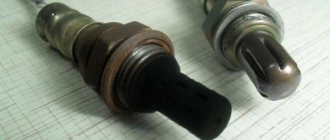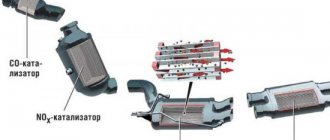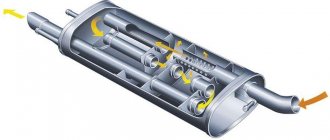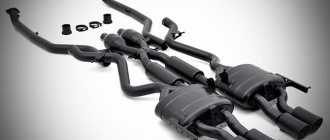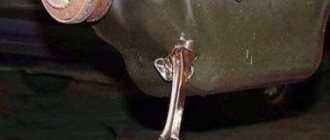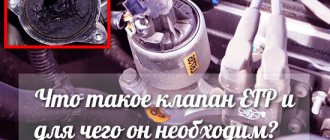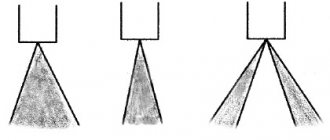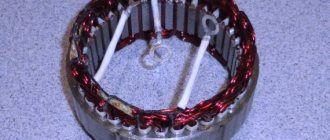GlushakoFF › Blog › Signs and symptoms of a clogged catalyst
Determining the signs of a faulty catalyst
Exhaust system catalyst - explanation. This component of the muffler system plays a fairly important role, since it is not only a kind of exhaust gas filter and burns out harmful CO2 impurities, but is also directly responsible for fuel consumption and the dynamic characteristics of the engine. A fairly common question arises among car owners in connection with the serviceability of the catalytic converter and the time it takes to repair or replace it. Let's start with how to determine as accurately and correctly as possible whether the catalyst is clogged and what its symptoms are without the help of special diagnostic equipment.
Destroyed catalyst symptoms
1) The first sign of a clogged or melted or destroyed catalyst is the degree (pressure) of exhaust gases leaving the rear of the muffler. Here you can understand whether your catalyst is clogged or destroyed, since if the catalyst is destroyed, the smell of the exhaust will be acrid and bluish, and if it is clogged, the exhaust will barely come out of the pipe.
2) The second and more common symptom is an unjustified, sudden increase in fuel consumption (taking into account a working engine and high-quality fuel). This is all explained quite simply, a faulty catalyst does not maintain the optimal afterburning temperature of exhaust gases (the normal temperature of a EURO-4 catalyst is from 350 to 750 degrees Celsius) and the injection system, by monitoring the oxygen sensor (lambda probe), automatically increases the fuel supply for temperature increases, but gasoline flies into the pipe and the temperature does not increase.
3) The next, also common sign of a clogged catalyst is the appearance of a metallic sound in the exhaust system during acceleration or brisk throttling. This incredibly annoying ringing comes from either the manifold catalyst or the secondary one (depending on their presence in the car), and this rattling and ringing is facilitated by a half-destroyed catalyst, or a completely clogged catalyst block that has moved from its seat.
Clogged catalyst - symptoms
• We will not talk about a decrease in acceleration dynamics and a decrease in draft characteristics in the topic of a clogged catalyst, since there are many reasons influencing these factors, and they can be a typical chain reaction, for example, to an injector that has not been cleaned for a long time or faulty spark plugs and coils ignition We can definitely say that if the car has lost low-end thrust, then you shouldn’t immediately blame the catalyst, you just need to carry out diagnostics and figure out the reason.
• Now we will tell you how to determine whether the catalyst is clogged or destroyed using diagnostic equipment. Here everything is a little simpler (if you have naturally defined devices, a diagnostic OBD cord and a program) and more understandable. Using diagnostics, you can immediately determine the malfunction of the catalyst based on existing ERRORS
. Also, every car equipped with a self-diagnosis system has a so-called CHECK ENGINE, a warning lamp that signals any malfunctions by turning on and not going out when the engine is running.
Here are the main and typical signs of a faulty catalyst in the exhaust system, with which you can diagnose whether it is worth replacing the catalyst
to a new or universal one, or remove it completely and put a flame arrester in its place.
Thank you for your attention, good luck on the roads. _____________________________________________________
Contact us by phone. in St. Petersburg: 988-77-91
Read our
BLOG
Visit our website:
GlushakoFF
Join our VK group:
GlushakoFF
Source
Checking the oxygen sensor using instruments
The lambda probe can be checked with a tester, digital voltmeter, or oscilloscope, but many simply do not have such a device and not everyone knows how to use it.
The first thing you need to do is warm up the engine, then we find the sensor under the hood or underneath the car, depending on the make of the car, which needs to be carefully inspected.
If it is heavily covered with soot or other various substances, then checking is no longer necessary, since the device will have to be replaced.
Next, you should make sure that there are no various mechanical damages, and also pay attention to the integrity of the wiring that goes to it.
If everything is normal, you need to start the car engine, but first disconnect the connector from the oxygen sensor and connect it to a voltmeter.
Next, press the gas pedal and dial 2500 rpm and release the accelerator. Next is the vacuum tube, which you should try to remove from the fuel pressure regulator.
Now we determine the serviceability of the probe, for which we only need to look at the measurements of the voltmeter; if the readings are 0.8 W or less than at the mark, or are completely absent, then the sensor is faulty.
Next, you need to check for a lean mixture, for which air leaks are provoked using a vacuum tube.
The voltmeter should show a mark of 0.2 W or even less, then the oxygen sensor is working. But other results, of course, indicate a faulty sensor and an inevitable replacement.
Catalyst malfunction: signs and testing methods
The catalytic converter in a car plays an important role in the exhaust system. Its purpose is to clean exhaust gases before they enter the atmosphere, and to reduce resistance to their release.
A faulty catalytic converter will result in a loss of vehicle power. The car will no longer drive fast, and fuel consumption will increase. In addition, a Check Engine .
Naturally, these symptoms do not guarantee that this particular unit is faulty. Therefore, in this article, we will analyze what are the symptoms and signs of a catalyst malfunction.
“We will first repair what is first necessary, but it is better to immediately replace some part, otherwise the repair will cost much more later” - this phrase can be heard by any car owner who comes for diagnostics or repair of the catalyst, a phrase that threatens to increase several times the cost of inexpensive repairs. To avoid being scammed by a car service center, click on any of the messengers below to find out 5 simple ways to avoid being scammed
